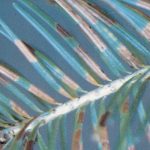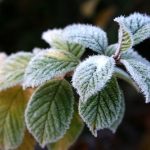Is Mistletoe The Kiss of Tree Death?
The deciduous trees are nearly all bare now, putting their branches— and whatever is living in them— in full view. If you think you see a bird’s nest, look a little closer and you might discover that your tree is playing host to a growth of mistletoe.
Mistletoes are actually parasitic plants that exist all over the world. Often seen as a pest by foresters—or a handy ruse for hopeful lovers—mistletoes use trees as surrogate root systems, hijacking their water and nutrient supply. While rarely considered an immediate threat, these plants can cause stunted tree growth, a reduction in seed production, and even death in severe cases.
On the other hand, many biologists consider mistletoe to be a fundamental species that affords surprising benefits to a long list of forest inhabitants. Studies have revealed that removing large amounts of mistletoe can result in the exodus of a local bird population as they often use it for nesting. And, because mistletoe lives off of trees, its leaves are chock full of nutrients. When its leaves fall, they enrich the soil and benefit ground-dwelling species.
In the Pacific Northwest, dwarf mistletoe (which is native) has good and bad implications for a forest. It can alter the structure of forest canopies, reduce the amount of beneficial fungi, and increase the risk severe wildfires. But, scientists in southwestern Oregon discovered that nearly all of the endangered northern spotted owls had made their nests in mistletoe infested limbs.
So, is mistletoe friend or foe?
It’s actually both. It’s nice to consider the benefits of mistletoe, but managing it can have its advantages as well. As with most things, it’s all about moderation.
Controlling Mistletoe
If you’ve spotted mistletoe growing in your trees, the best thing you can do is give the trees extra water during a drought and apply a slow-release fertilizer in the Spring. You can also put down a 2”-3” layer of mulch around the tree’s trunk, extending toward the drip line. This will help the tree compete with grass and conserve moisture.
If you are determined to remove the mistletoe, you can prune it out of infested branches by cutting it back flush with the branch. This will not kill the mistletoe, but it will slow it down and keep it from spreading. Removing an entire branch may be the only way to get rid of it completely. Pruning to remove mistletoe is best done in the Winter by a certified arborist.
Be Cautious When Bringing It Indoors
If you are thinking about harvesting mistletoe to bring indoors for the holidays, be careful. Mistletoes are poisonous, especially their white berries. It would take eating several berries for an adult to become ill, but pets and children may be more sensitive. Be sure to keep your home-grown mistletoe well out of their reach.
Questions about a mistletoe infestation? Contact Inexpensive Tree Care today.



